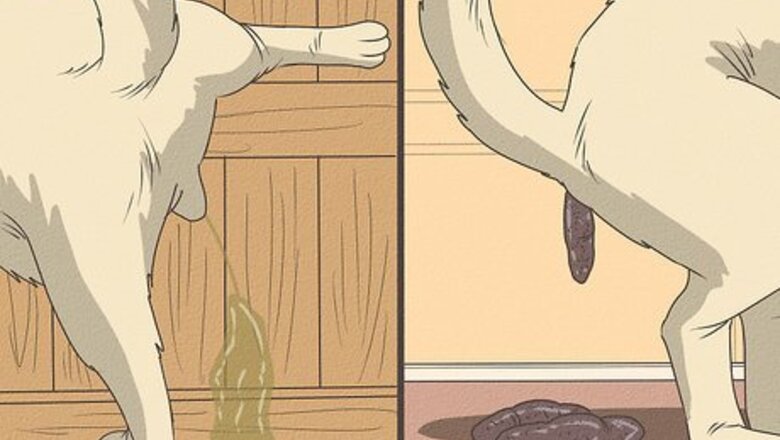
views
Recognizing Anxiety Separation
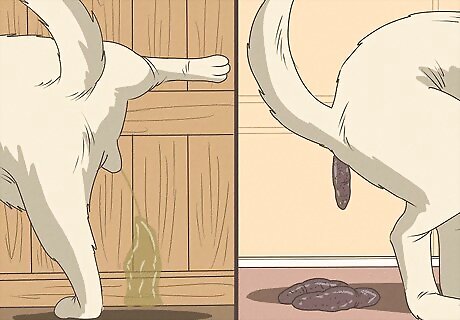
Look for defecation and urination. If your doggie is house trained but suddenly starts voiding in the house, it might have to do with separation anxiety. Your dog might poop or pee right before or right after you walk out the door. It is important to note that issues with either urination or defecation may or may not be related to separation anxiety in older dogs. As dogs age, they often lose control of their bowels due to urinary incontinence or other medical conditions. Urination or defecation in the house in a trained dog might also be due to a medication they recently started. Alternately, it might be because you (and your dog) just moved into a new house and the dog wants to mark its territory. If your dog urinates or defecates when you are around as well as when you are not, it is probably not a case of separation anxiety.
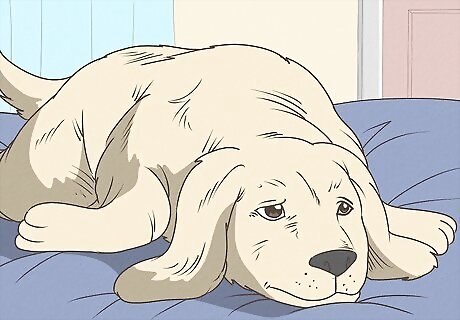
Keep an eye out for depression. If you’re getting ready to leave, your dog might start to feel and act a bit down. If your dog heads away from the door as you leave – almost as if it is unwilling to watch you go – it could be because your exit makes it feel sad. Maybe your older dog was chewing a toy or playing happily with a ball until you ready yourself to head out, at which point it puts the toy aside and seems to no longer have any interest in it. Your dog might go to its “safe place” – a dog bed, a favored spot on the couch, or some other location in order to deal with the trauma of separation.
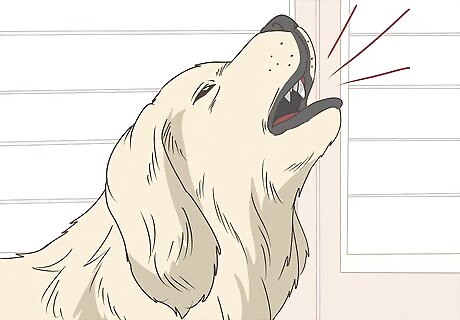
Listen for vocalizations that indicate anxiety. If your dog starts barking excessively when you’re getting ready to leave, your dog might have separation anxiety. The barking, howling, or whining might occur at different times as you ready yourself to leave. For instance, your dog might being howling when you start getting dressed for work, or when you put your dog in its pen before leaving.
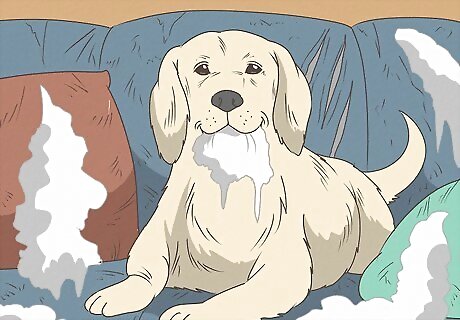
Monitor for destructive behavior. If your dog starts gnawing the legs on kitchen chairs or tearing up pillows, it could be because it has anxiety. Other destructive behaviors include “digging” into the couch or carpet, which could result in the carpet or couch cushion in question being torn up.

Look for escape. If your older dog suddenly demonstrates a desperation to escape the place where it is usually confined, it may be developing separation anxiety. For instance, your dog may scratch endlessly at the door of the room where you usually house it, or tear and chew at the mesh of the baby gate you keep it behind when you go out.
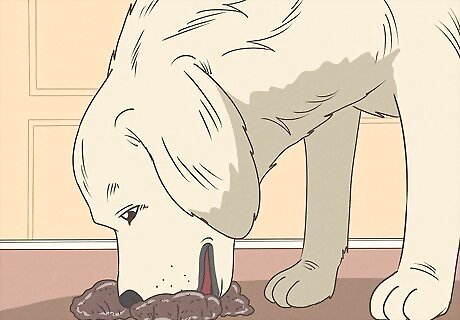
Look for excrement consumption. Older dogs with separation anxiety often engage in coprophagia – consumption of their own feces. If you come home to a smeared, messy pile of excrement, it could be because your dog was consuming it. Check your dog’s mouth for a sticky brown smear that indicates it might have been eating its own feces. Dogs may eat feces for a number of reasons. Don't assume this means that your dog has separation anxiety unless you notice that it's only happening while you're gone.
Modifying Your Dog’s Behavior
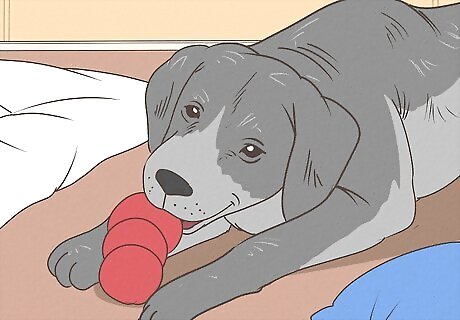
Use counterconditioning. Counterconditioning is a process whereby your older dog’s fearful or anxious reaction to separation changes to a happy, pleasant, or otherwise positive reaction. You can do this by ensuring your dog has a positive experience when you leave the house. For instance, you could give your dog a KONG toy when you leave the house. KONG toys are rubber playthings filled with bits of kibble or other doggie snacks. As your dog shakes and plays with the toy, small bits of the snack will come out so your dog can eat them. If your dog’s separation anxiety is only triggered when you or another family member leaves the house, whichever of you remains at home could soothe the dog by administering a doggie treat, petting and patting the dog gently, and offering soothing words of affection like, “It’s okay,” or “Don’t cry, doggie.” Counterconditioning works best with dogs who have mild separation anxiety.
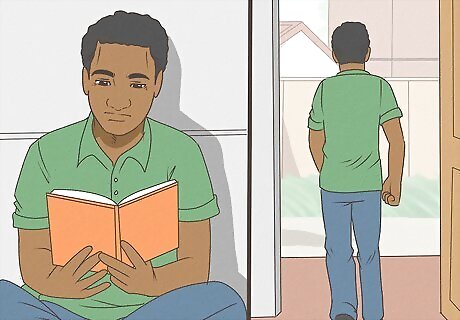
Try desensitization. Desensitization is a separation anxiety solution that requires confusing your dog’s mental “anxiety monitor” by separating from your dog with progressively greater duration and frequency over a long period. Your desensitization program should always begin by addressing the most basic first-stage symptoms of anxiety separation, then tackling more intense symptoms. For example, start by confronting your dog’s pre-departure anxiety. Maybe your dog pants and paces as you put on your coat or jacket. You can desensitize your dog to this behavior by putting on your coat and then – instead of exiting the house – sitting down to read a book. Once your dog has become desensitized to pre-departure rituals and behaviors, desensitize your dog to exiting the house. Walk out of the house, then walk back in after 30 seconds or so. Continue doing this several times each day for a few days. Every few days, increase the amount of time you spend outside your house by 60 seconds. Enact departure rituals and head out the door several times each day for several weeks in order to fully desensitize your dog. How long it takes to fully desensitize your dog depends on its ability to learn that your departure behavior and cues should not inspire anxiety. Desensitization is best for dogs with moderate or severe separation anxiety.
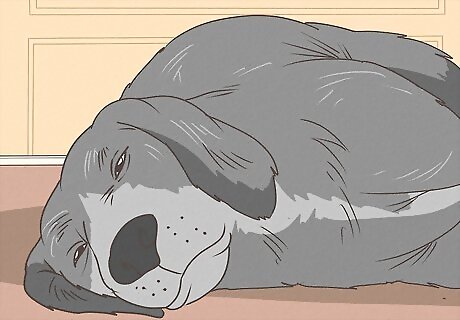
Tire your dog out. If you know you’re headed out soon, take your older dog for a walk around the block or at the park. Adopt a moderate speed. When your dog starts to lag behind or pant more than it usually does, you’ll know it’s tuckered out. Take your dog home for a much-needed nap (or at least a period of prolonged relaxation). While your dog is sleeping, you can make your exit. Instead of going to the trouble of wearing your dog out before leaving the house, you could also just time your exit to coincide with your dog’s regular naptime, if it has one.
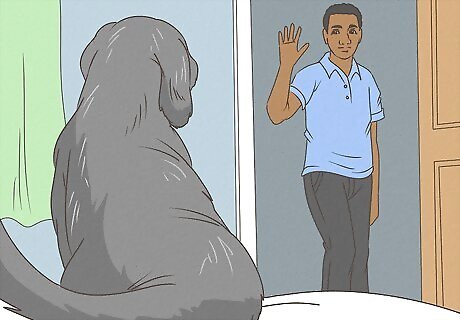
Take your dog to a safe space. Think about your dog’s favorite space in the house – perhaps a special room, a spot at the foot of the bed, or one of the arms of the sofa. Many dogs also associate their crate with security and feelings of relaxation. Inside its crate or in another safe space, therefore, your dog is less likely to feel the pain of separation anxiety. Place your older dog in its favorite safe spot and say, “Good-bye for now, good dog. I will return soon.”
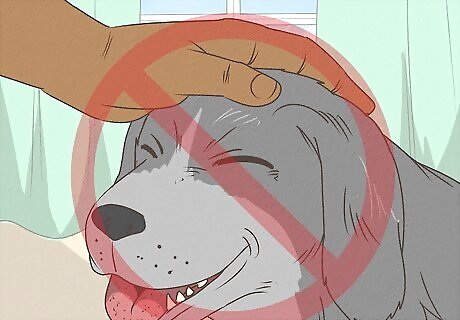
Don’t make your comings and goings a big deal. Dogs are excellent at sensing emotions. Sometimes your older dog’s separation anxiety is a result of it detecting anxiety in you. If you are noticeably nervous and worried when you head out the door, your dog might pick up on this and, over time, turn it into a habit. On the other hand, if you’re cool, calm, and collected when you head out, your dog will understand that your exit is no cause for alarm, and you will return home in due time. Avoid petting your dog or talking a lot to it when entering and exiting.
Using Objects to Deal With the Problem
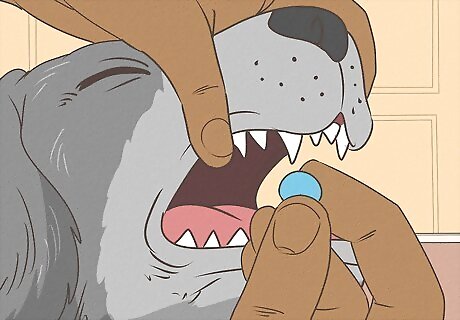
Try an over-the-counter relaxation product. There are a variety of commercially available medications and dog snacks that can keep your dog calm. Look for natural snacks or supplements that contain relaxing ingredients like lavender, lemon balm extract, ginger, chamomile, and other antioxidants. Give your dog one of these treats, capsules, or supplements before you head out. You might also look for tablets containing L-theanine (a stress-reducing amino acid) and/or tryptophan (an amino acid that encourages relaxation). Follow manufacturer directions when using supplements and medications.
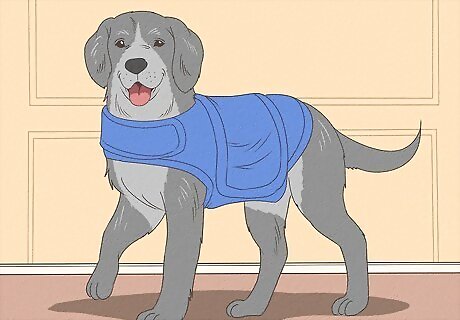
Try anti-anxiety apparel. There are several wearable products that can help your doggie stay calm. One is the Thundershirt. Thundershirts are designed to help calm dogs during a thunderstorm. The other product that might help calm your anxious dog is the calming collar. The shirt slips on over the dog’s back and straps around its chest and stomach. While the dog is wearing the Thundershirt, it feels safe and secure, as if it’s getting a gentle hug. The Thundershirt is available at your local pet store and machine washable. Like a regular dog collar, the calming collar slips around the dog’s neck and stays secure with a sliding strap. But the calming collar releases pleasing scent pheromones for up to one month. These scent pheromones will keep your dog at peace even when you leave. The calming collar is perfect for dogs who don’t want to take pills or wear a Thundershirt.
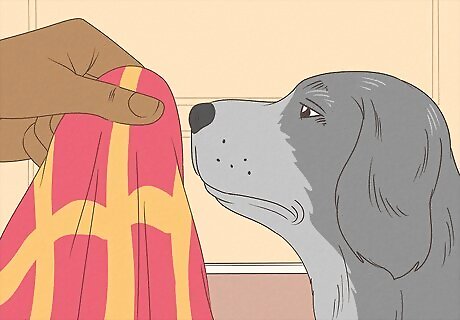
Give your dog something with your scent. Give your dog some unwashed clothes you wore recently that still have your scent. You could provide just one shirt, or a small pile of shirts, socks, and pants to help your dog feel close to you even when you’re far away. You might be surprised at what your dog likes. Try to include some stinky socks or sweaty gym shorts for your dog to sniff. If your old dog’s sense of smell has been dulled, try another object or technique to deal with its separation anxiety.

















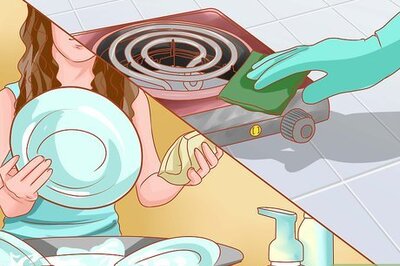

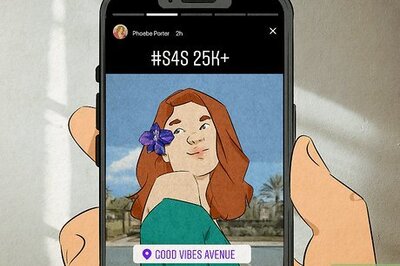
Comments
0 comment